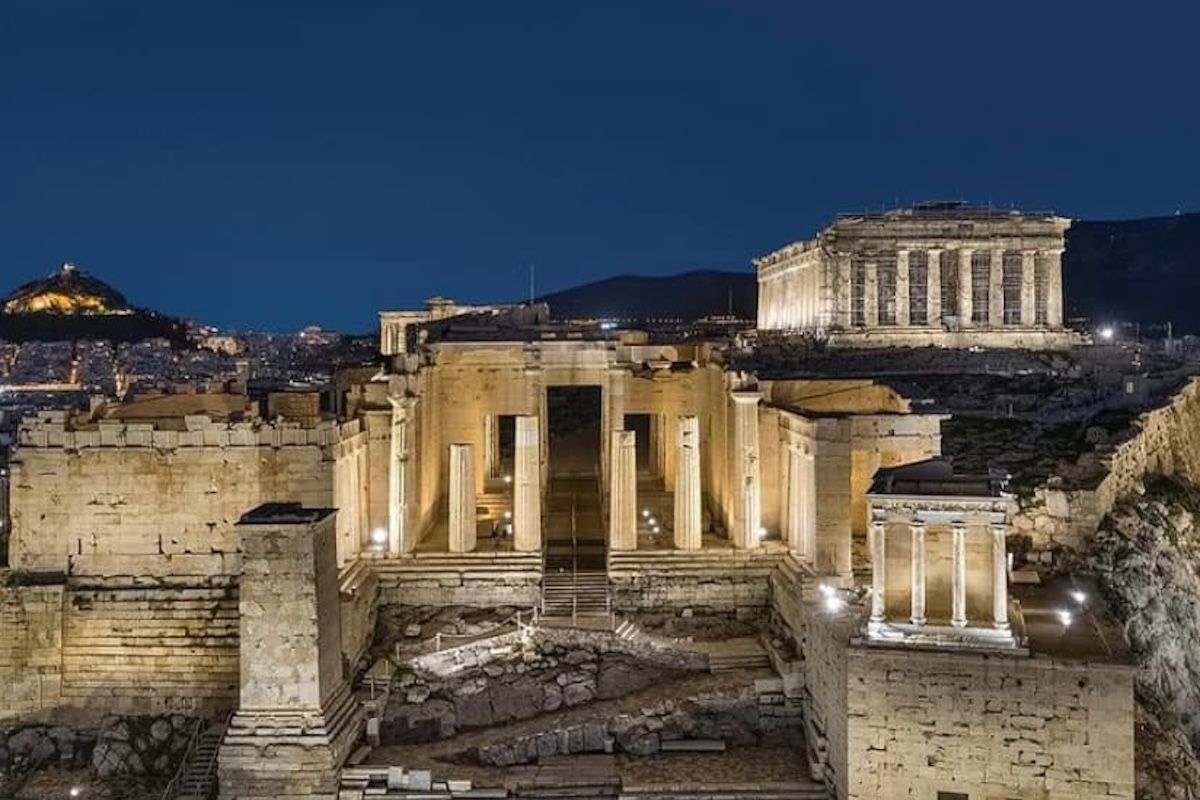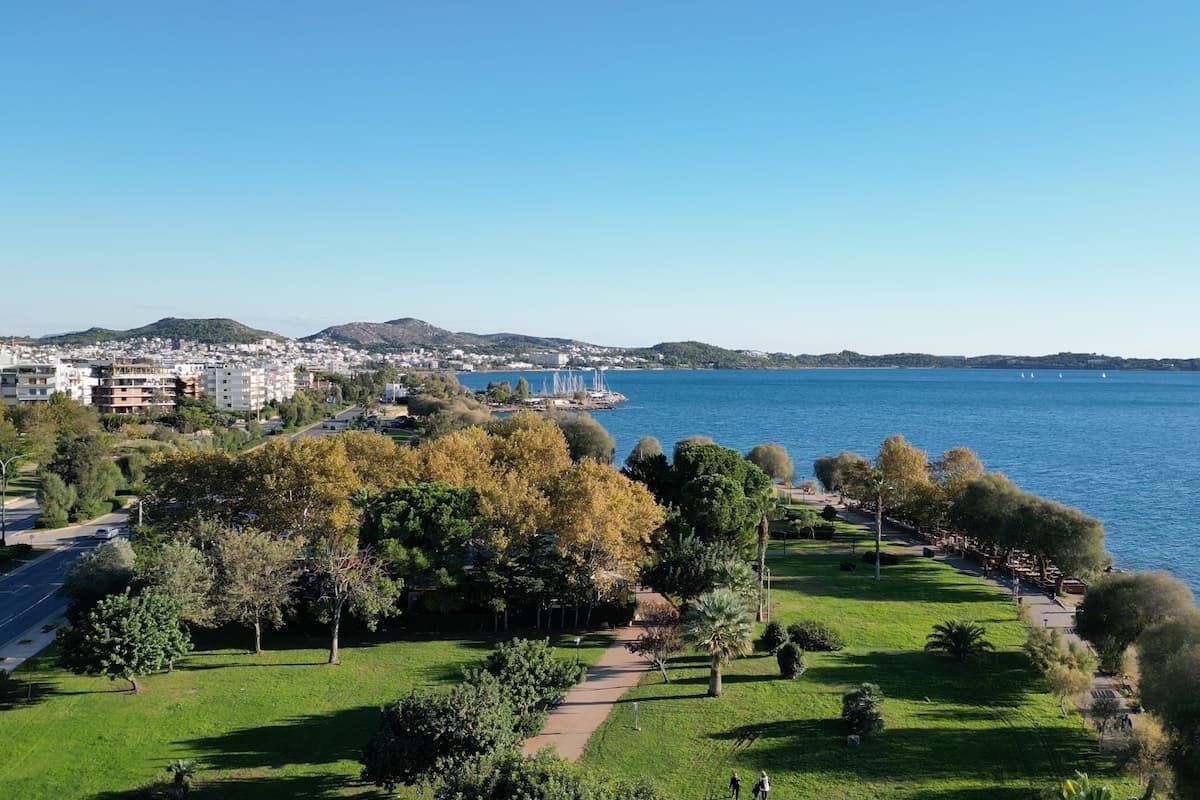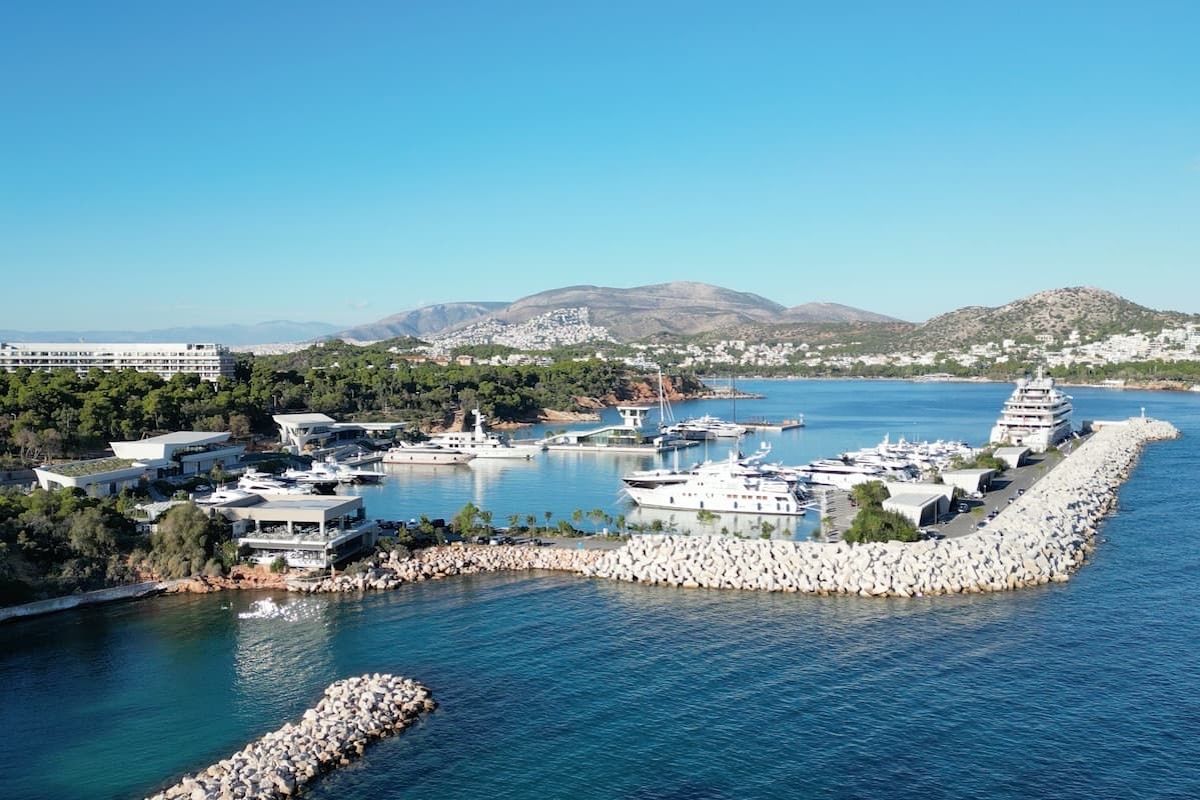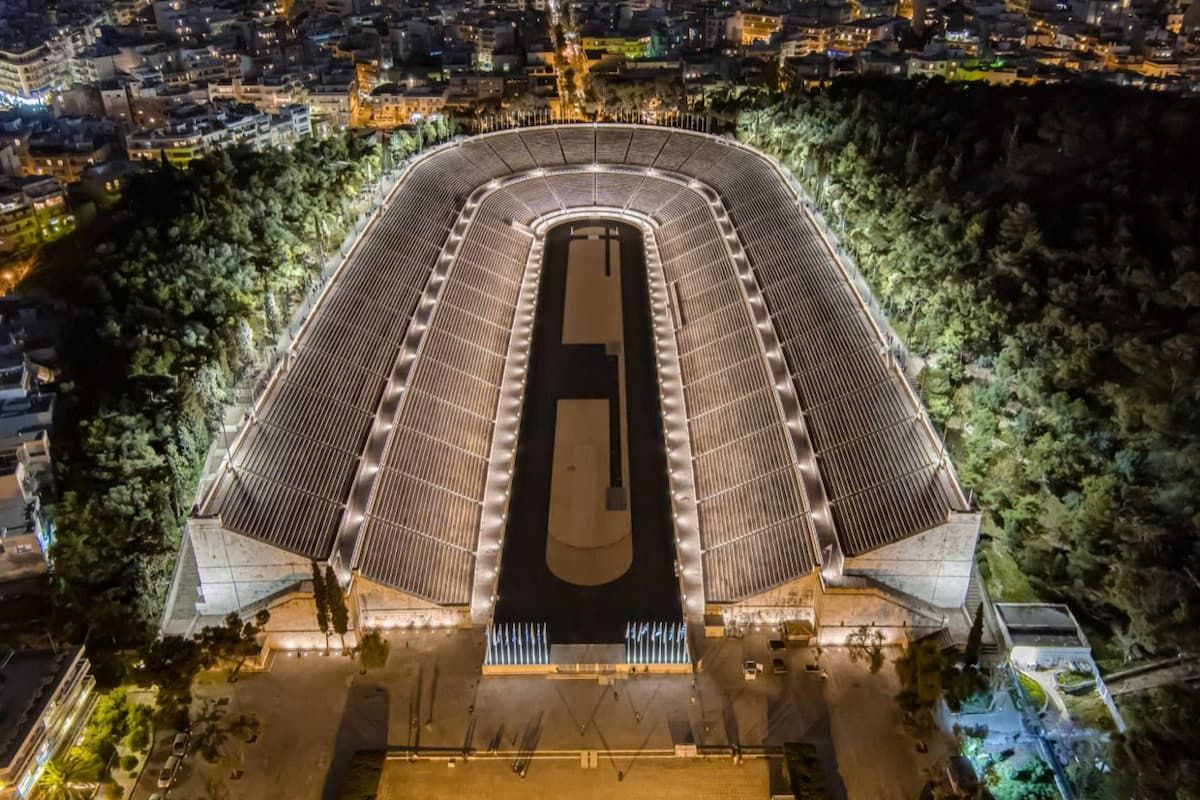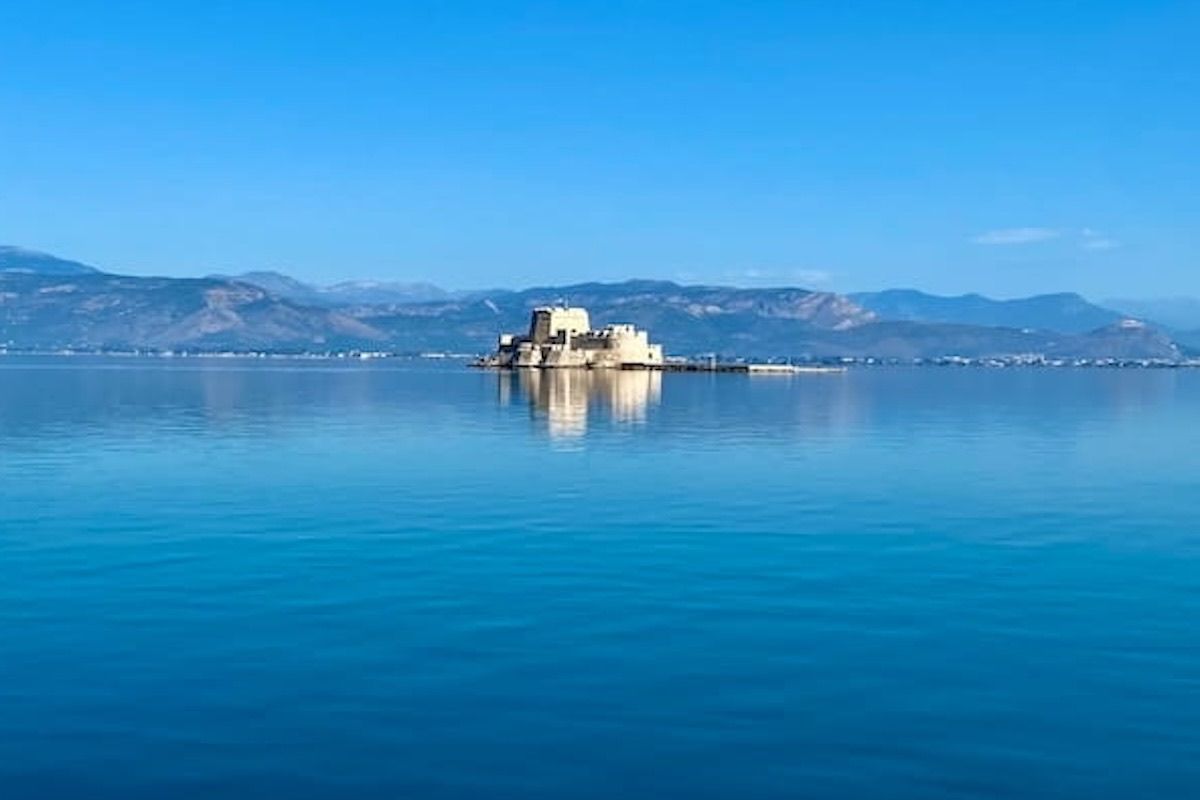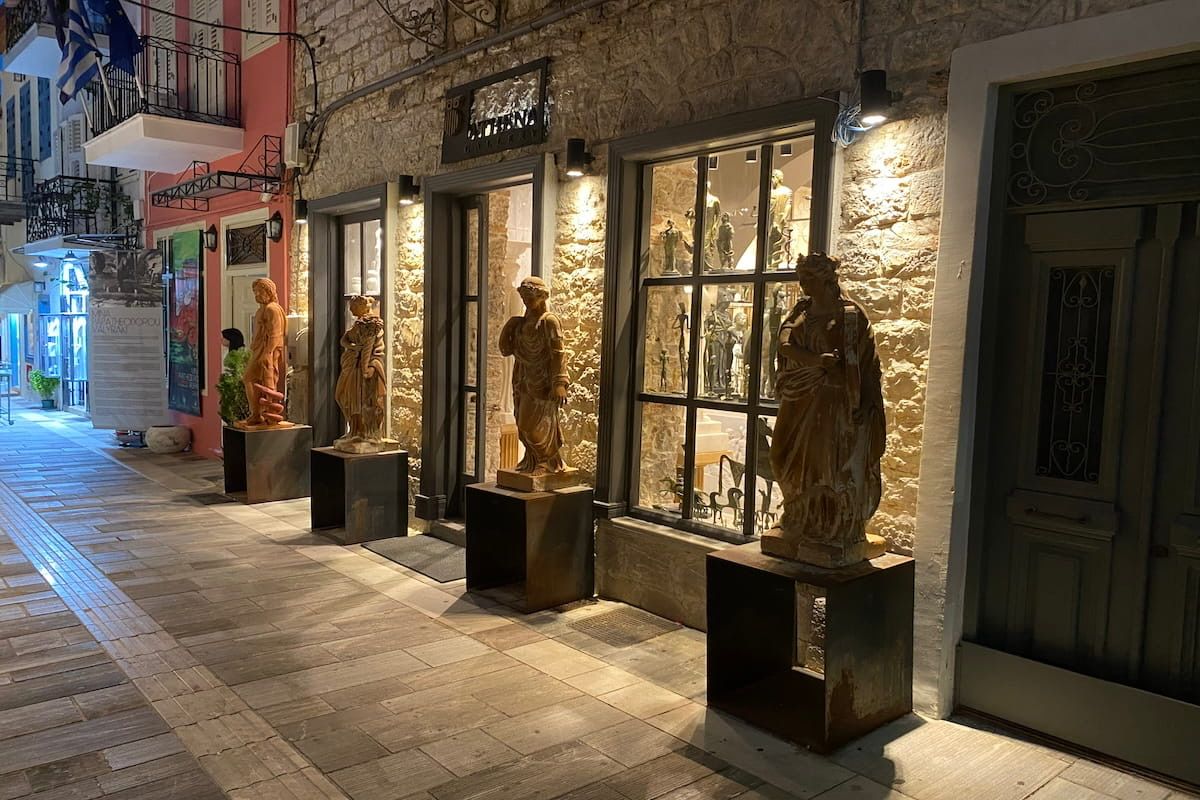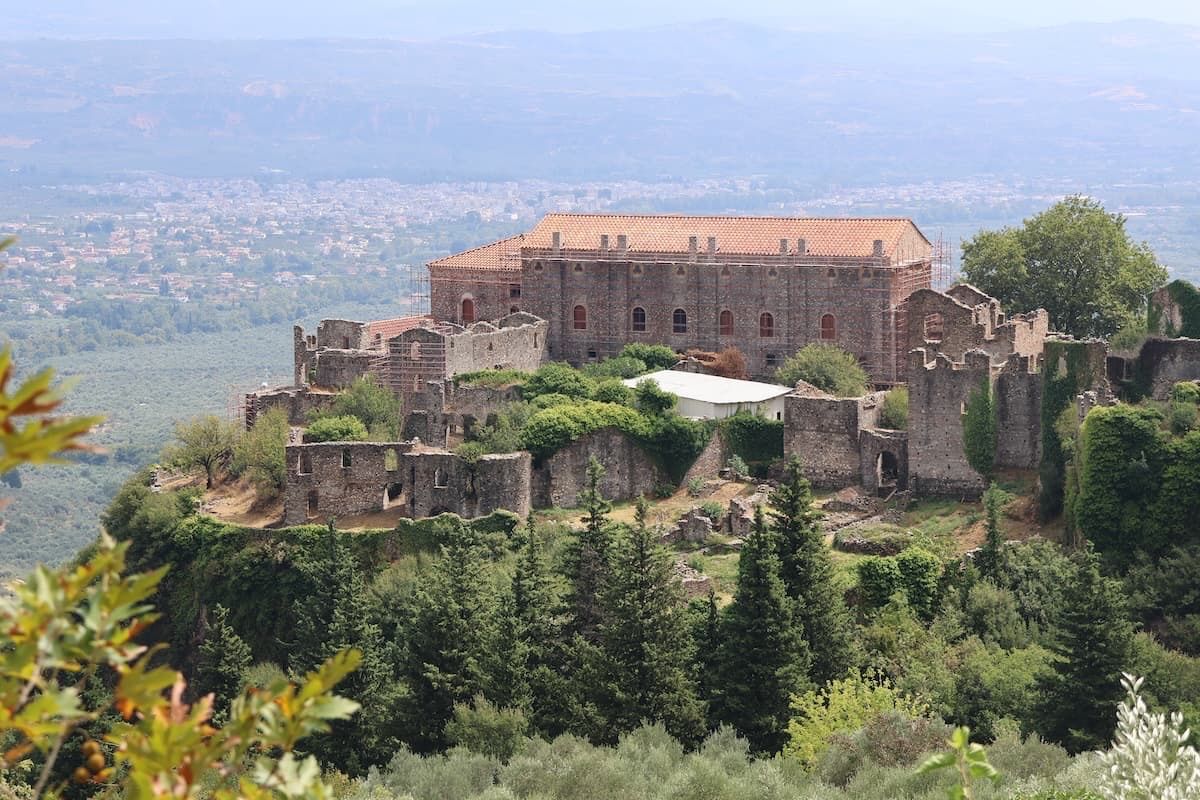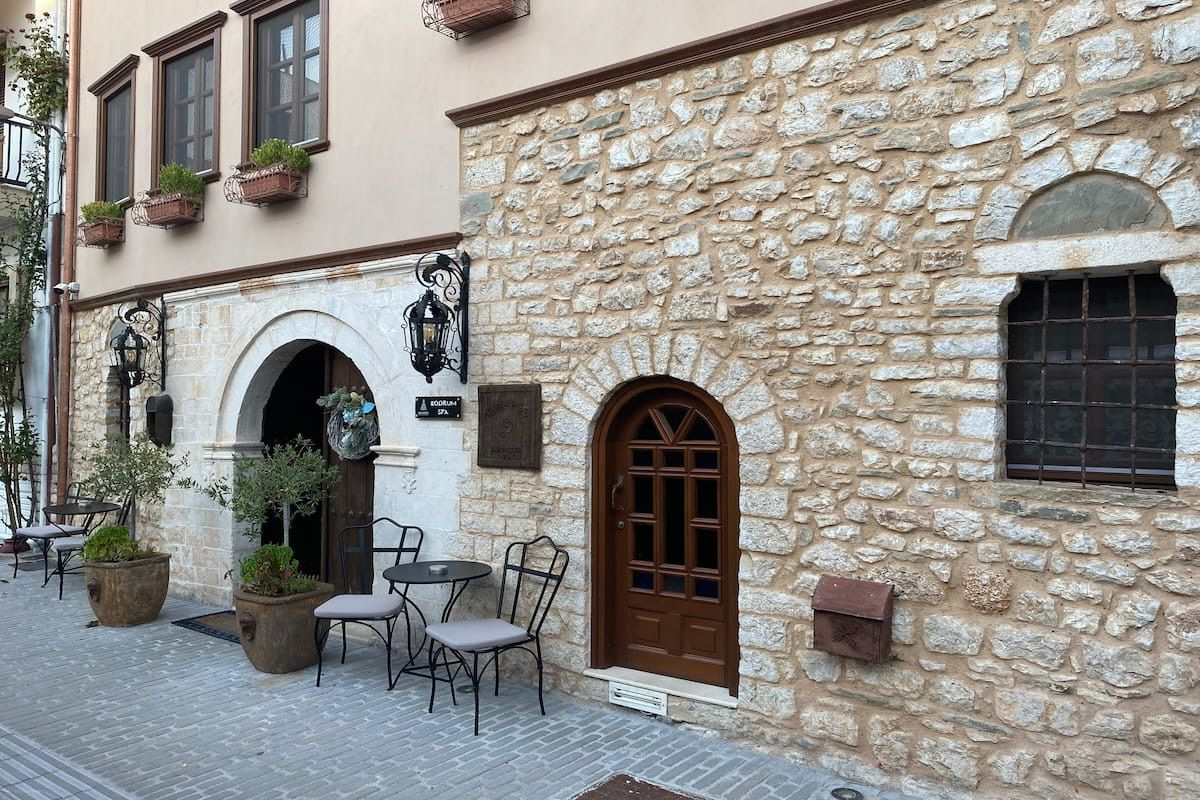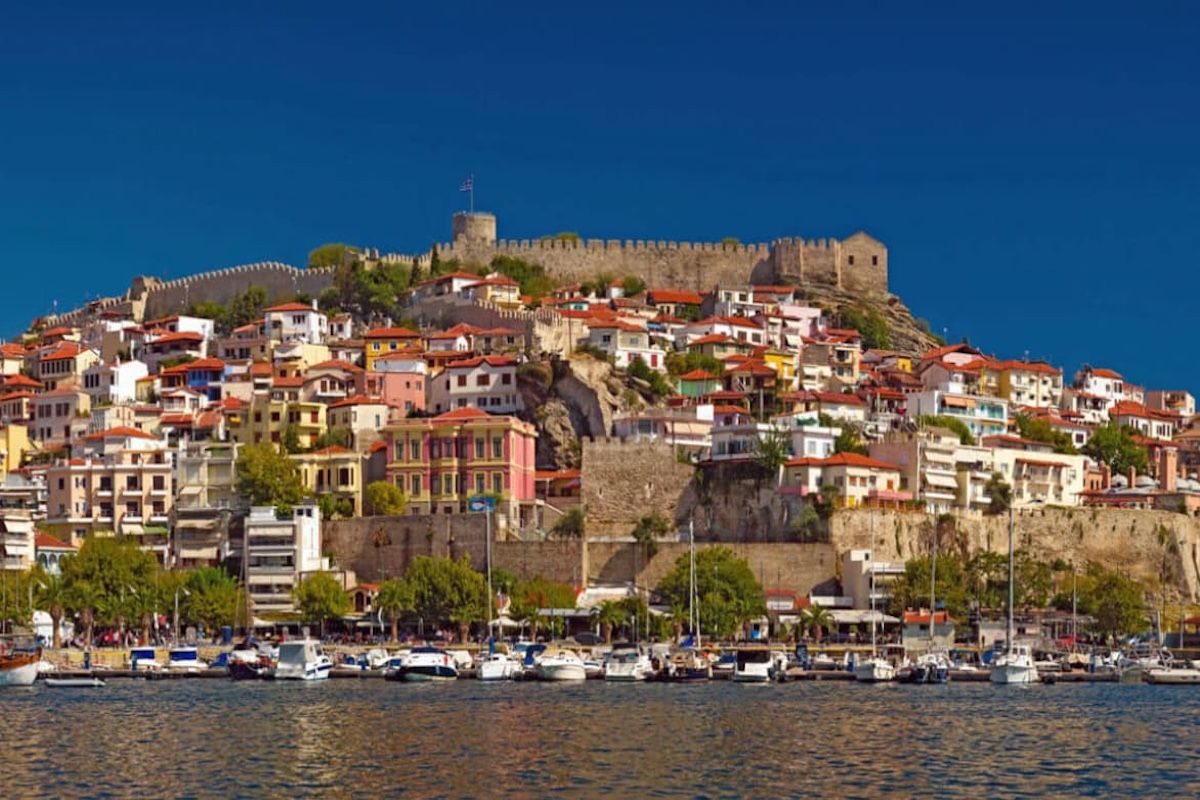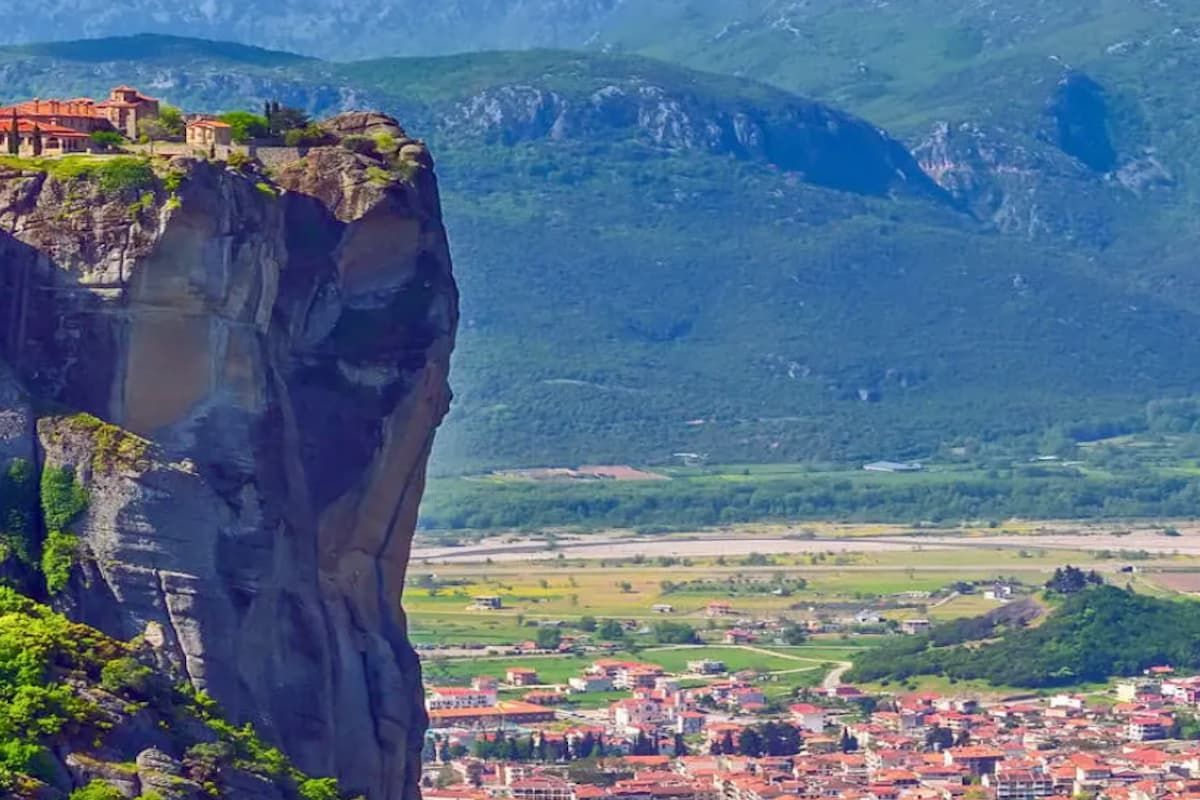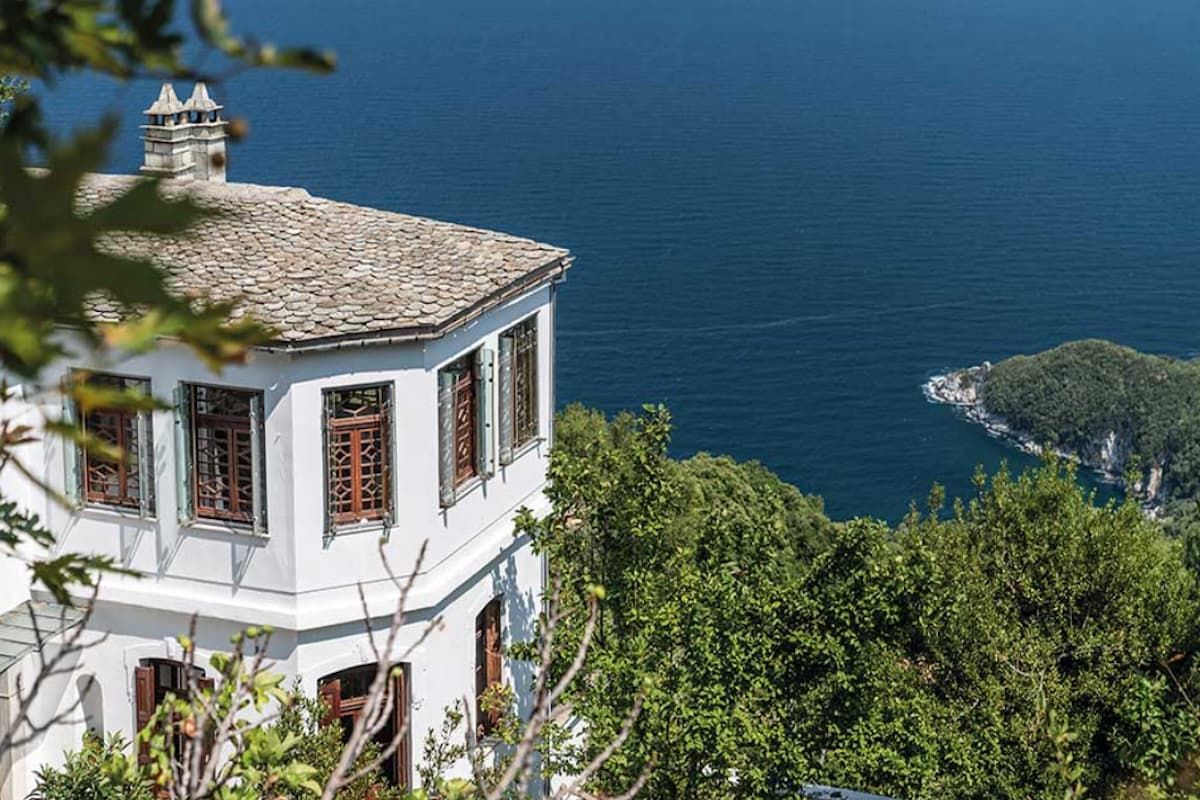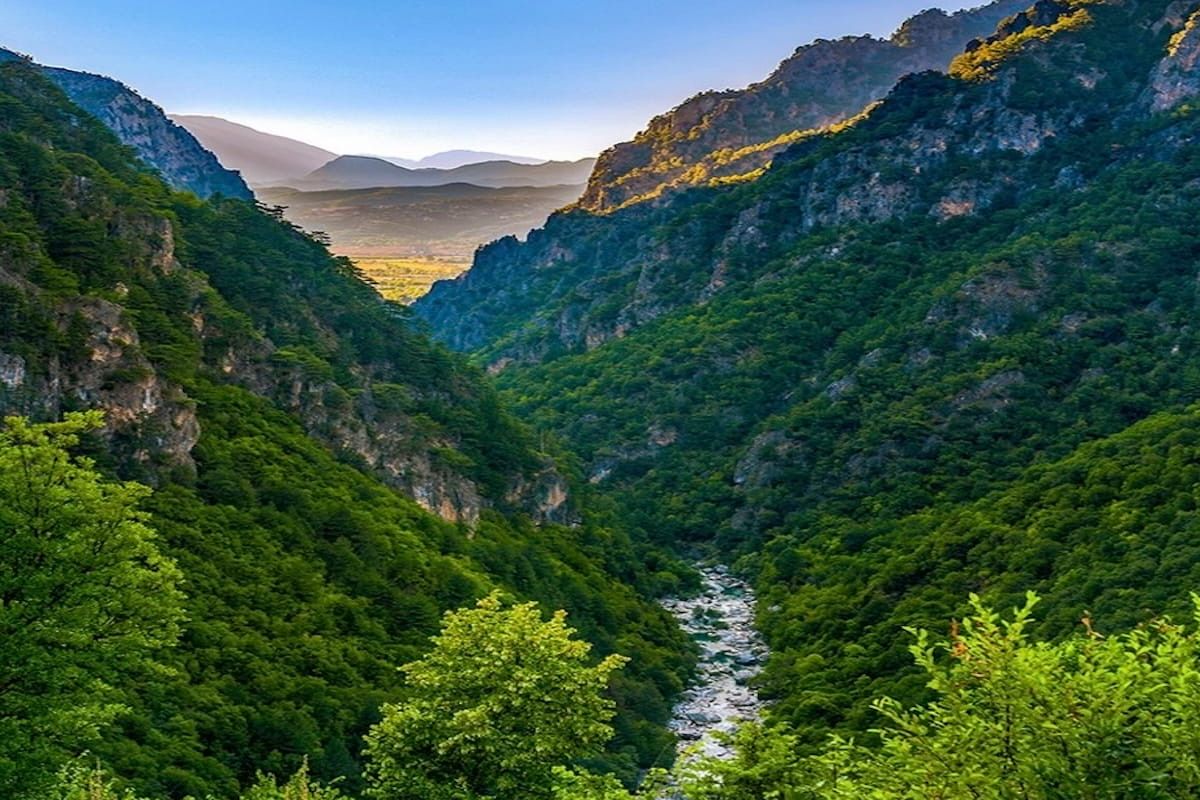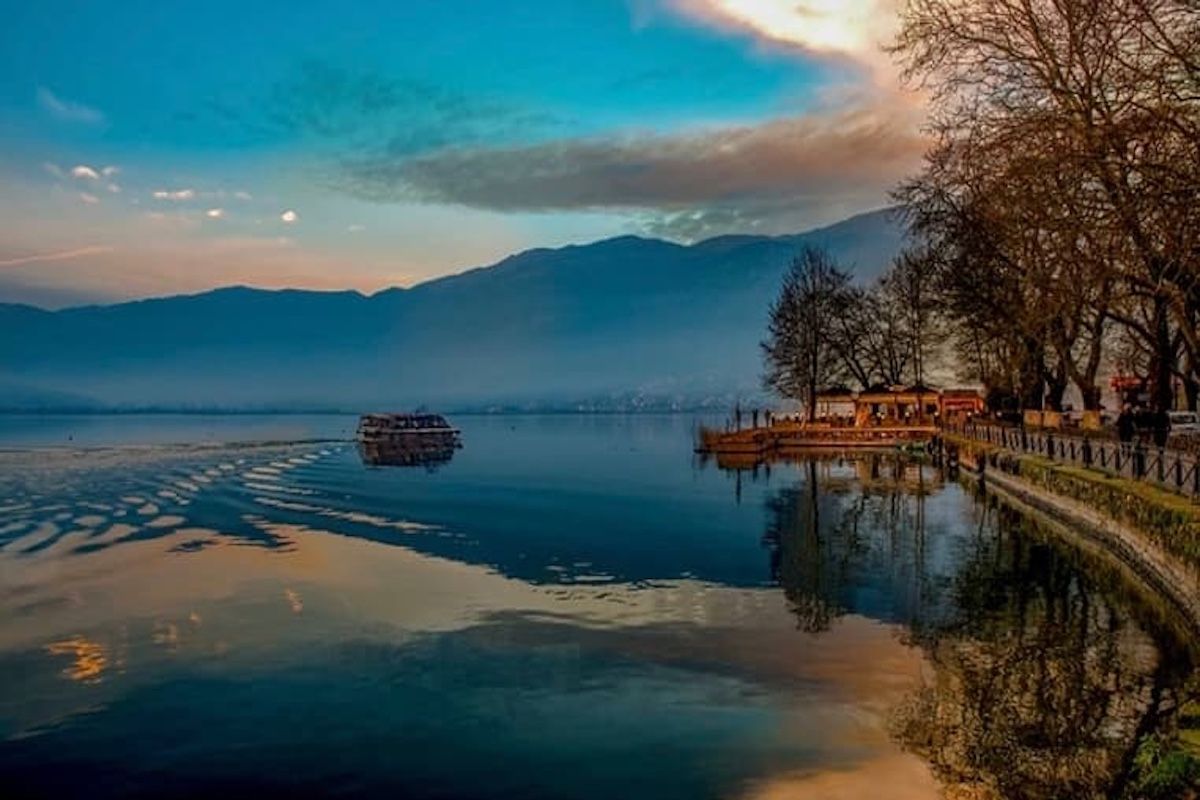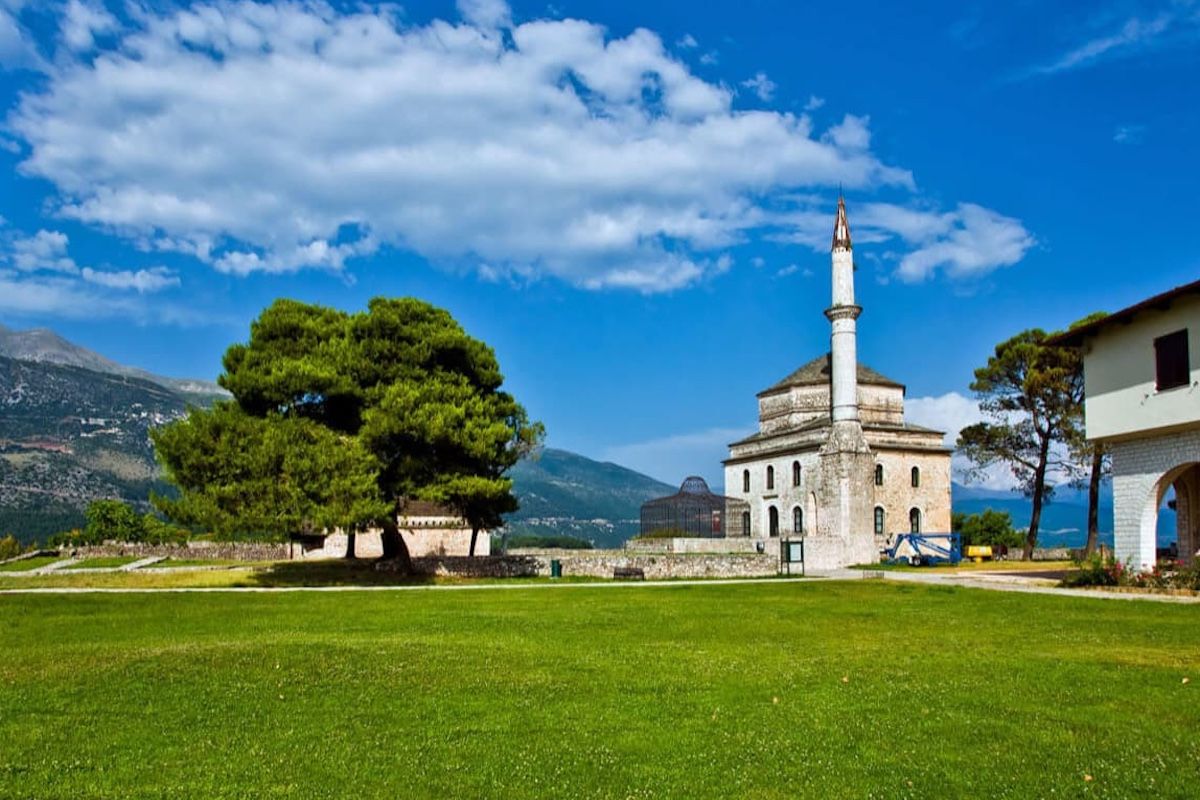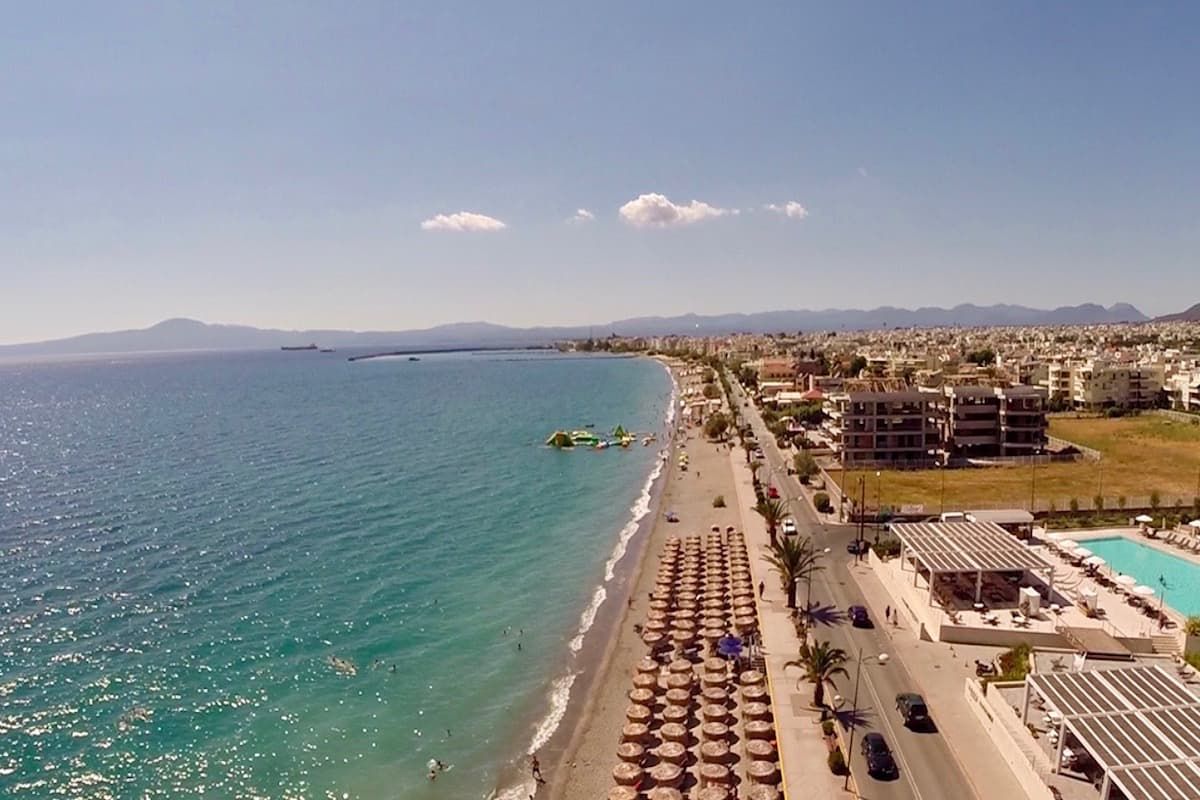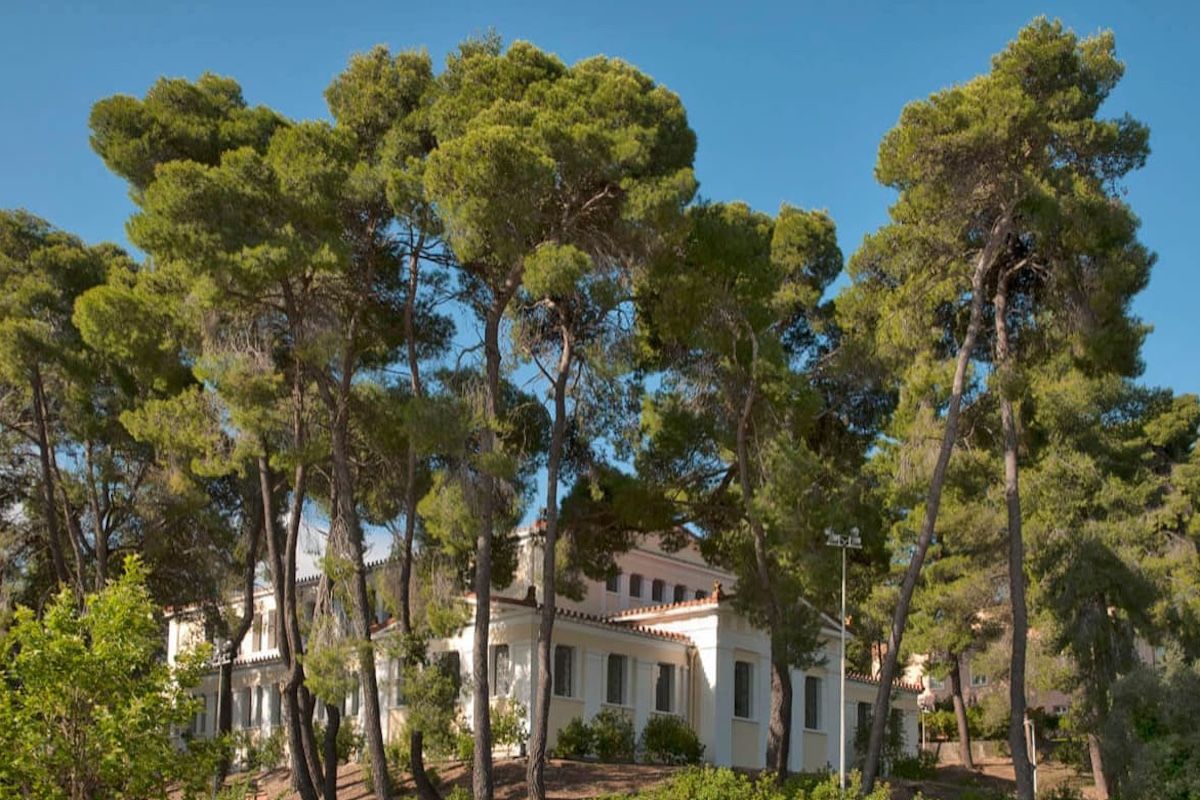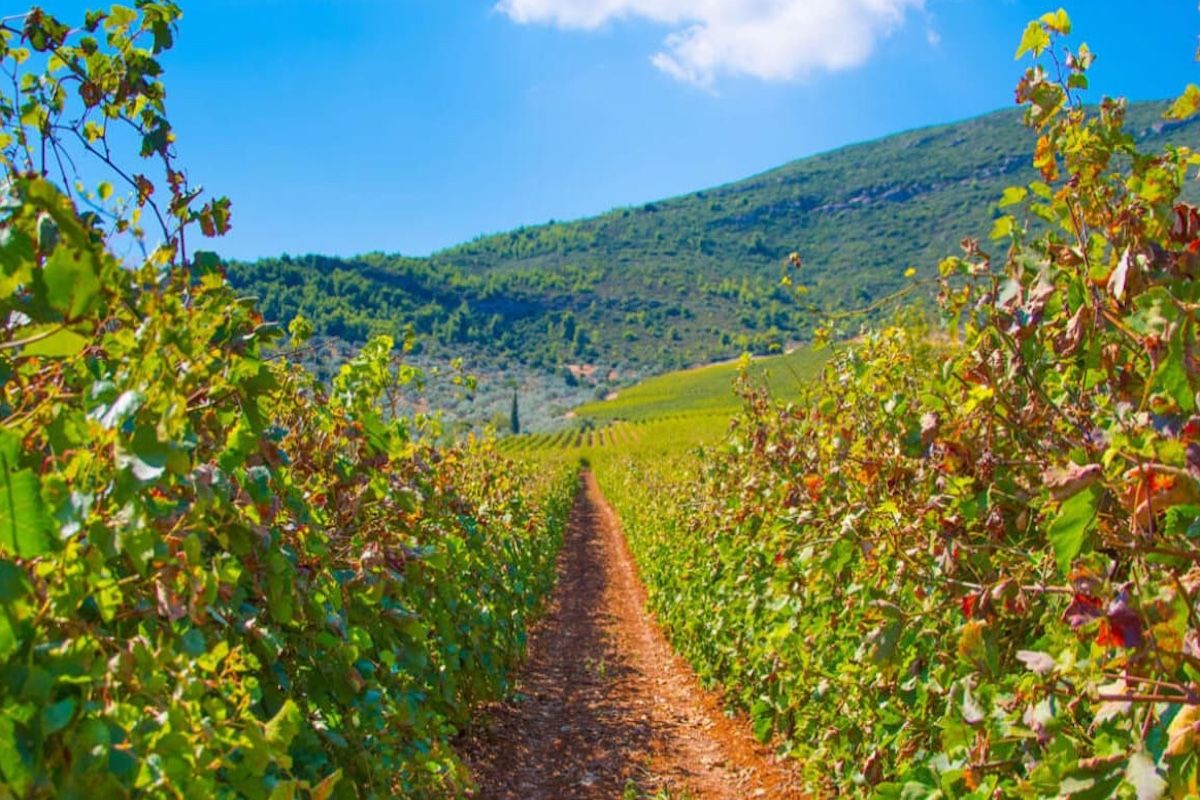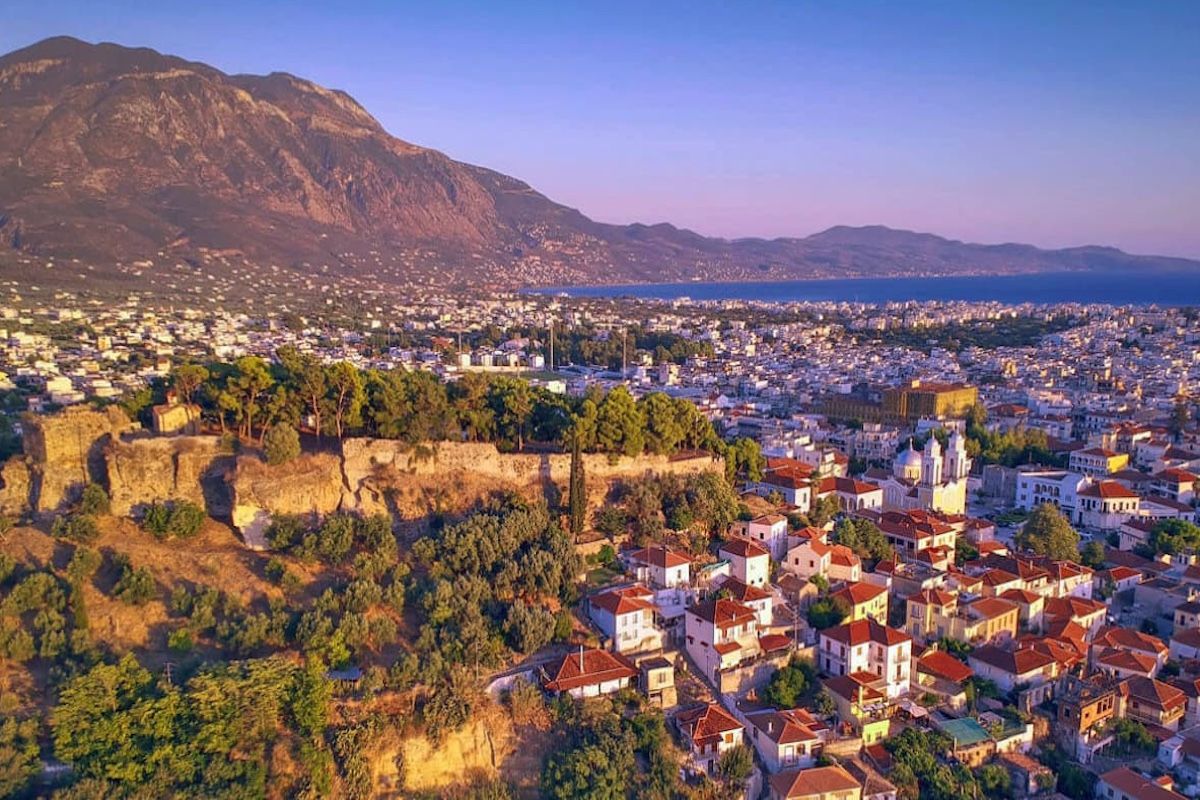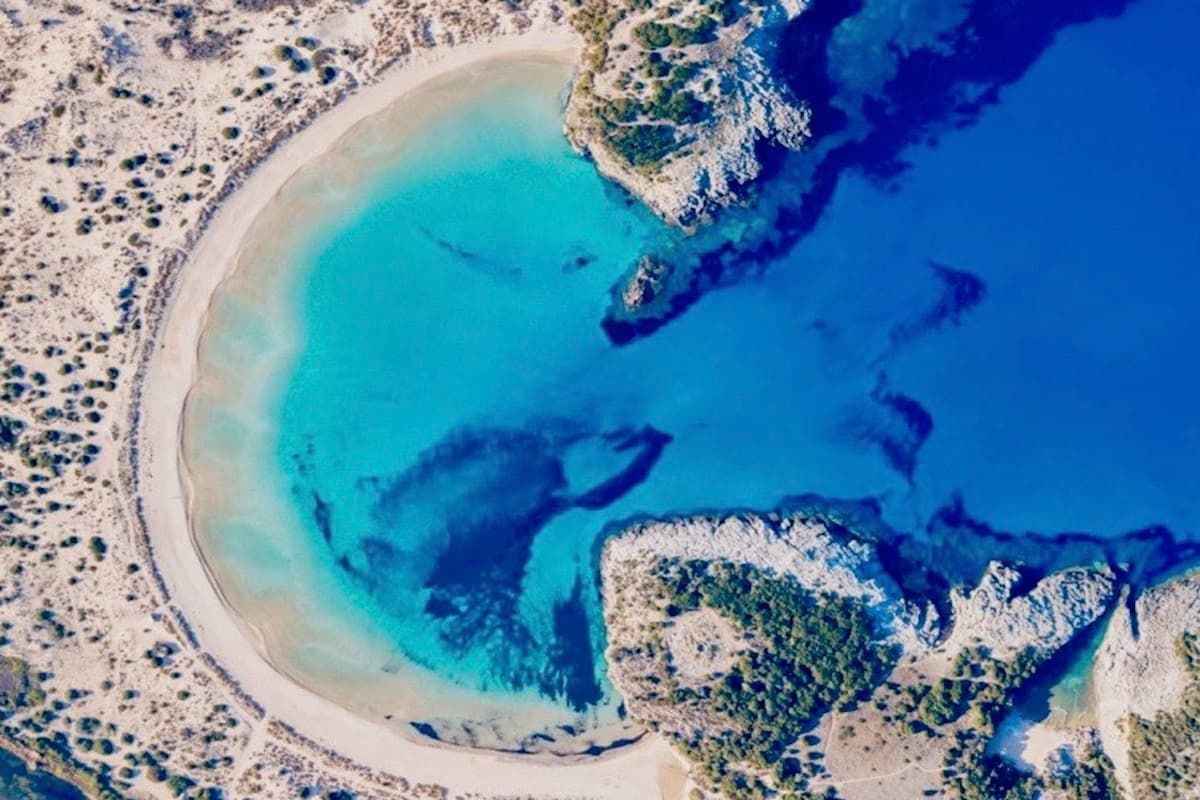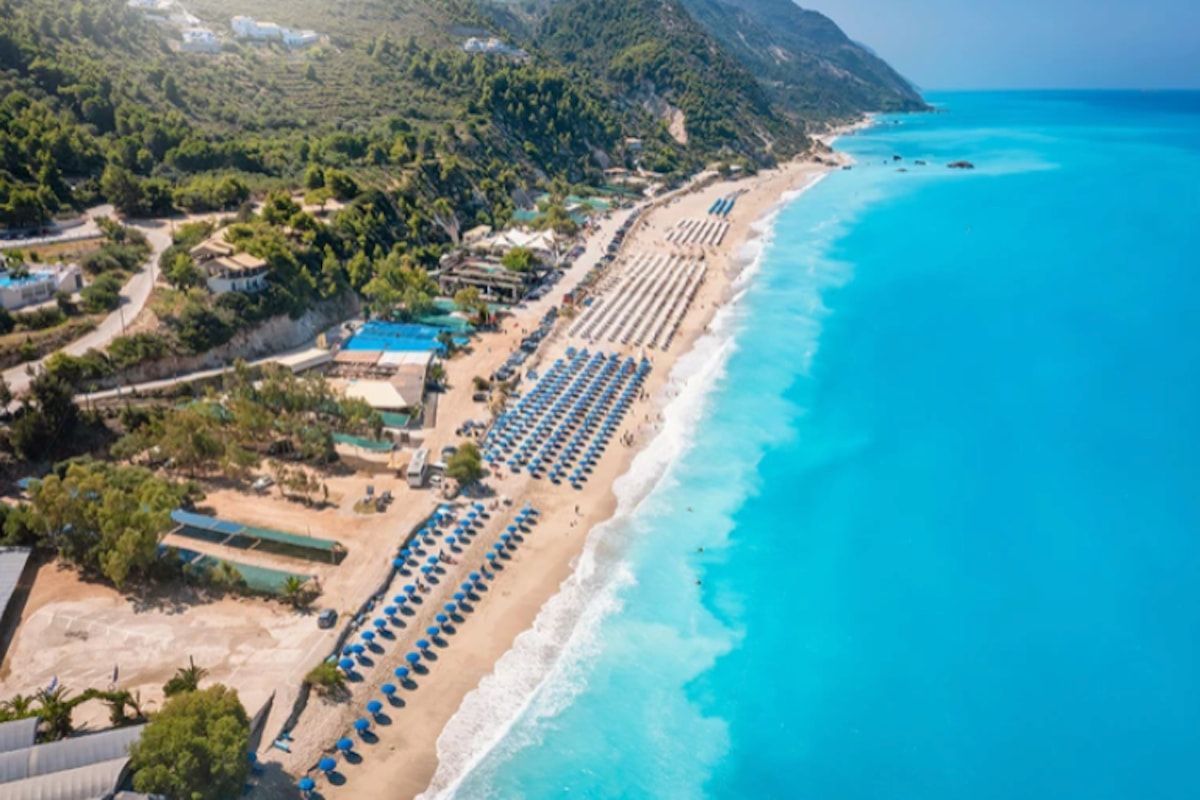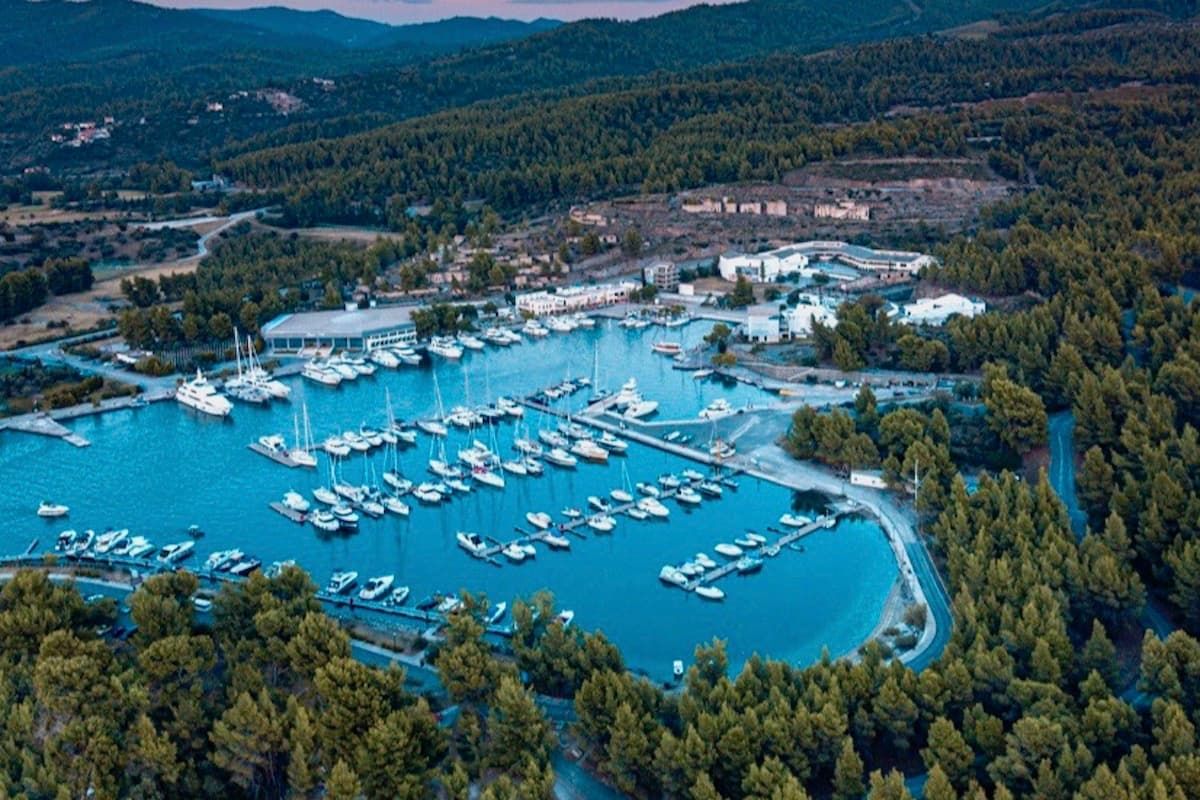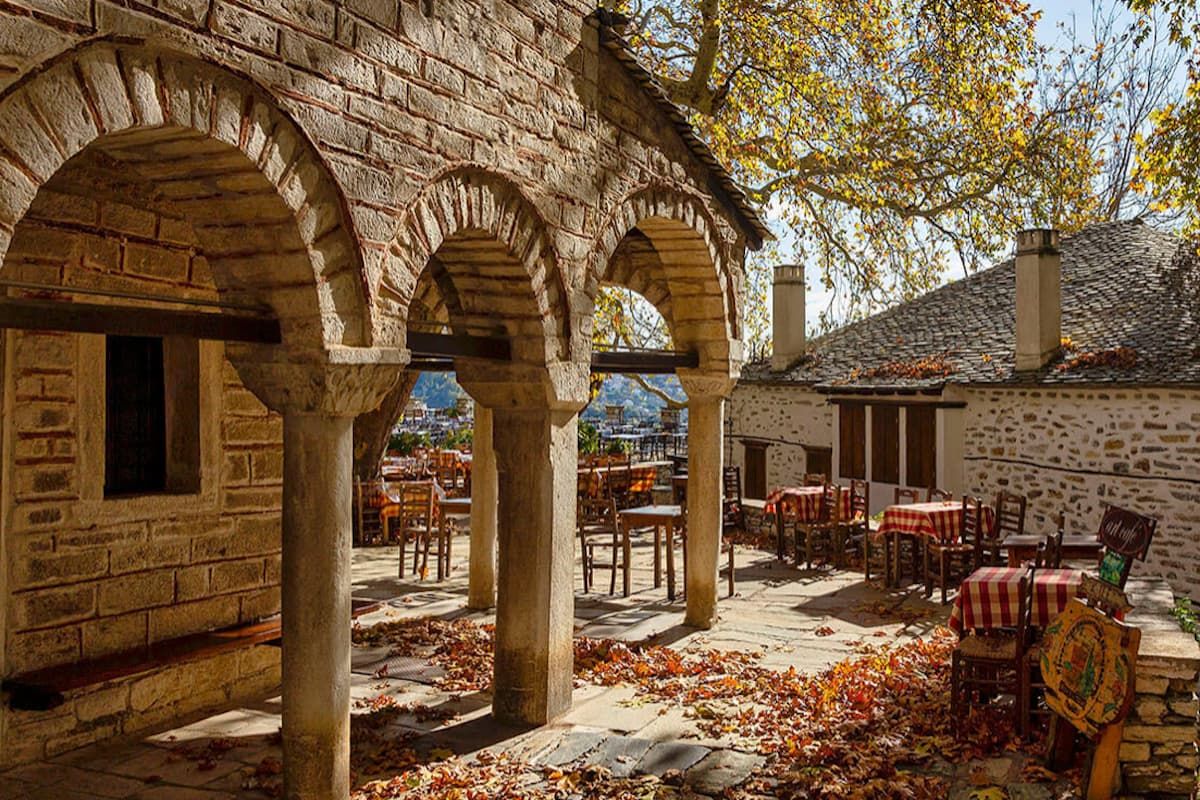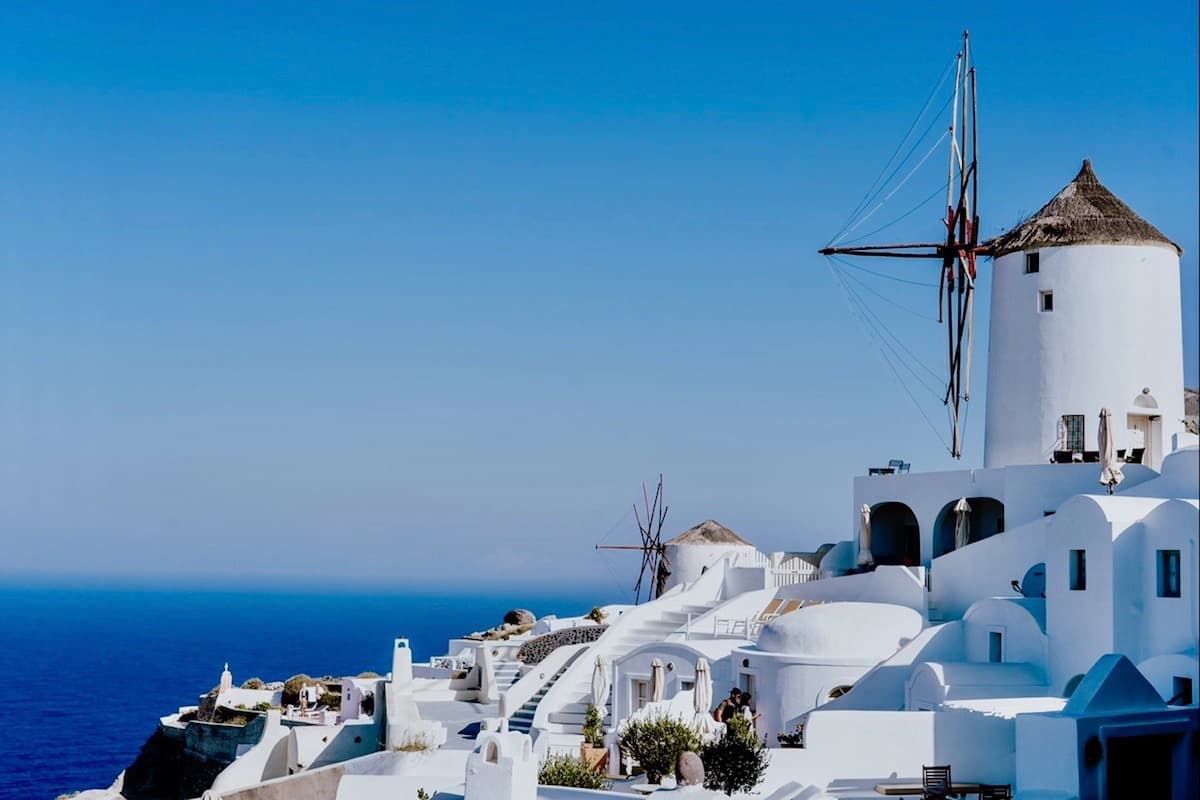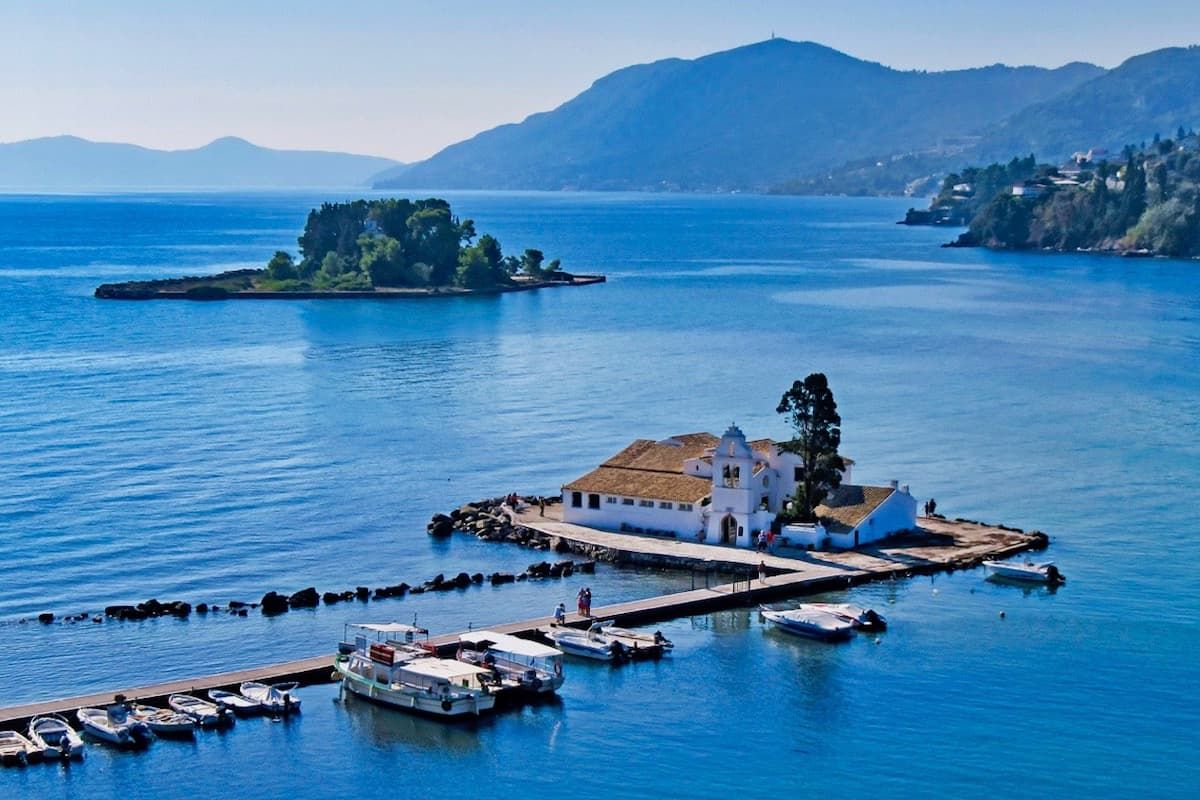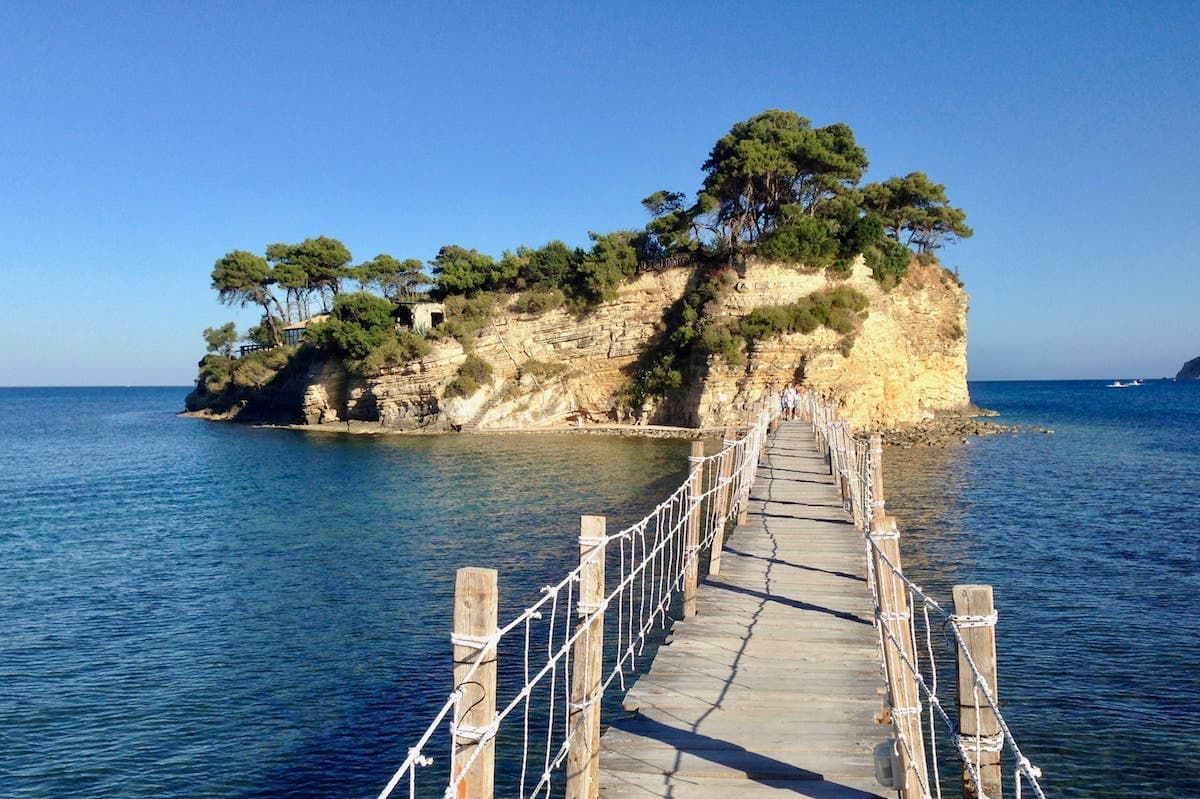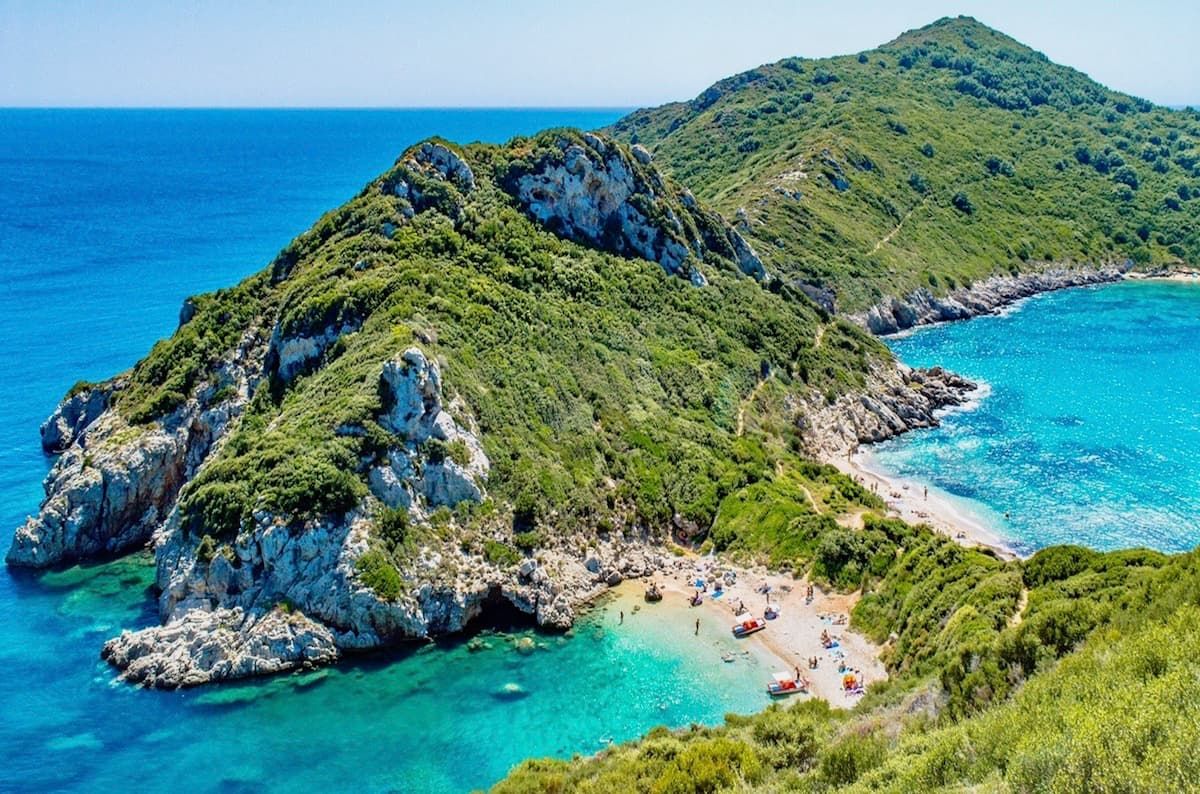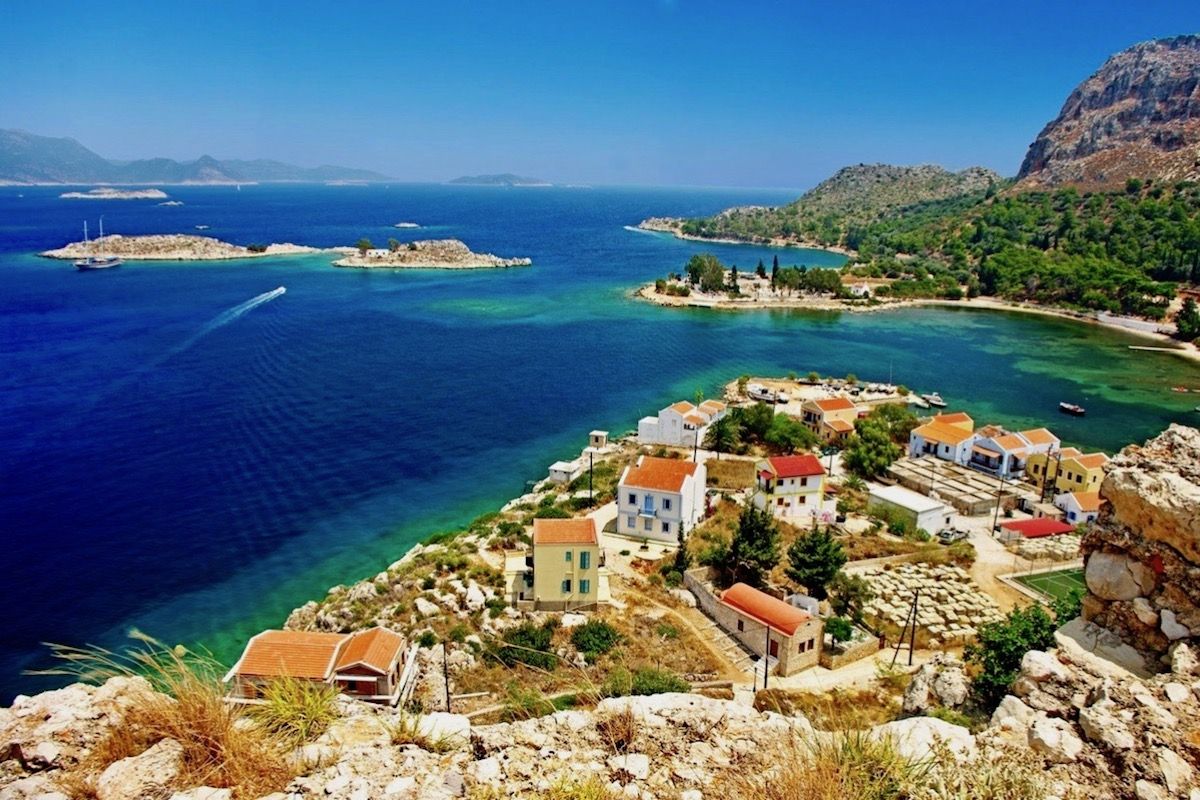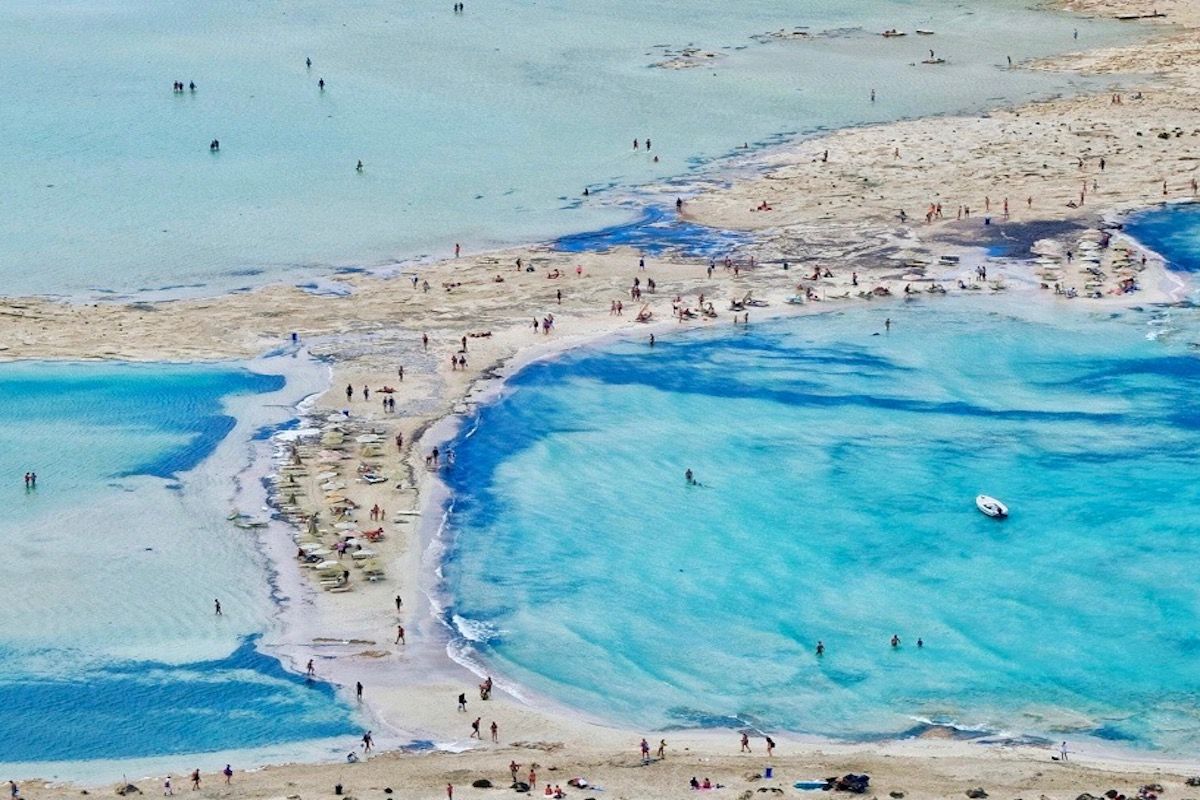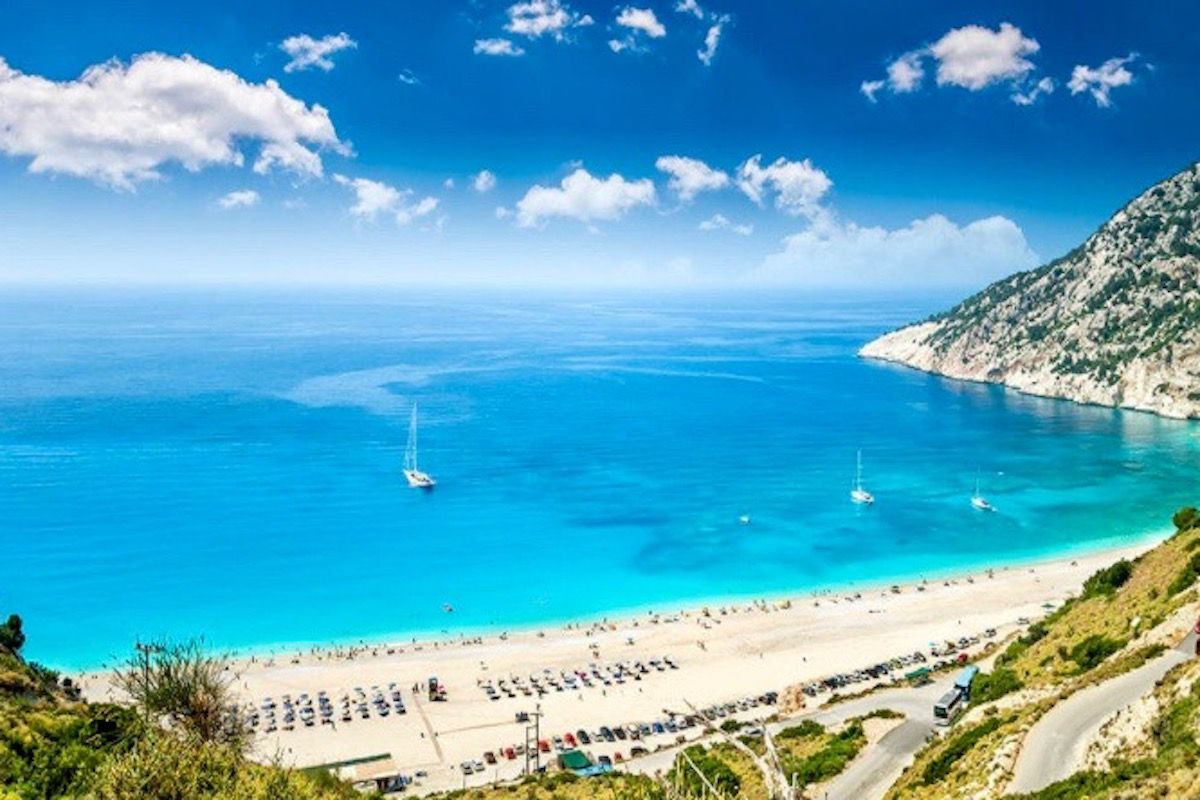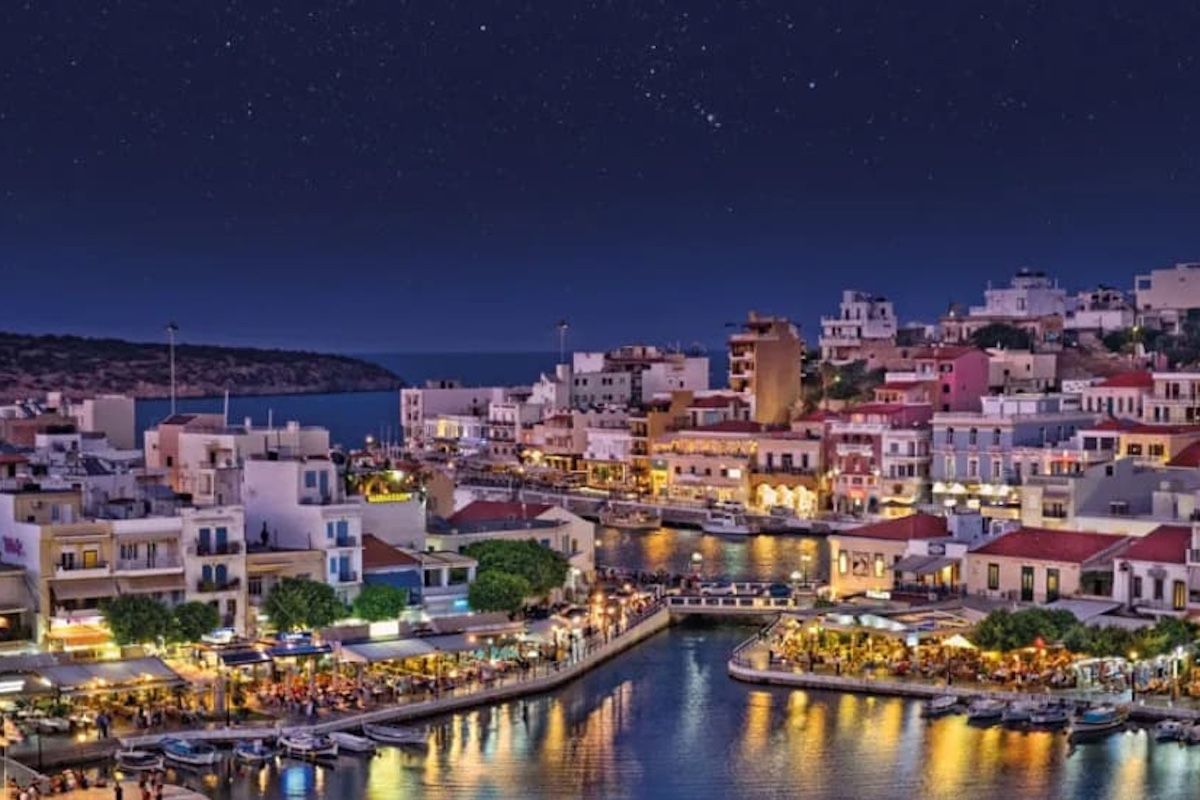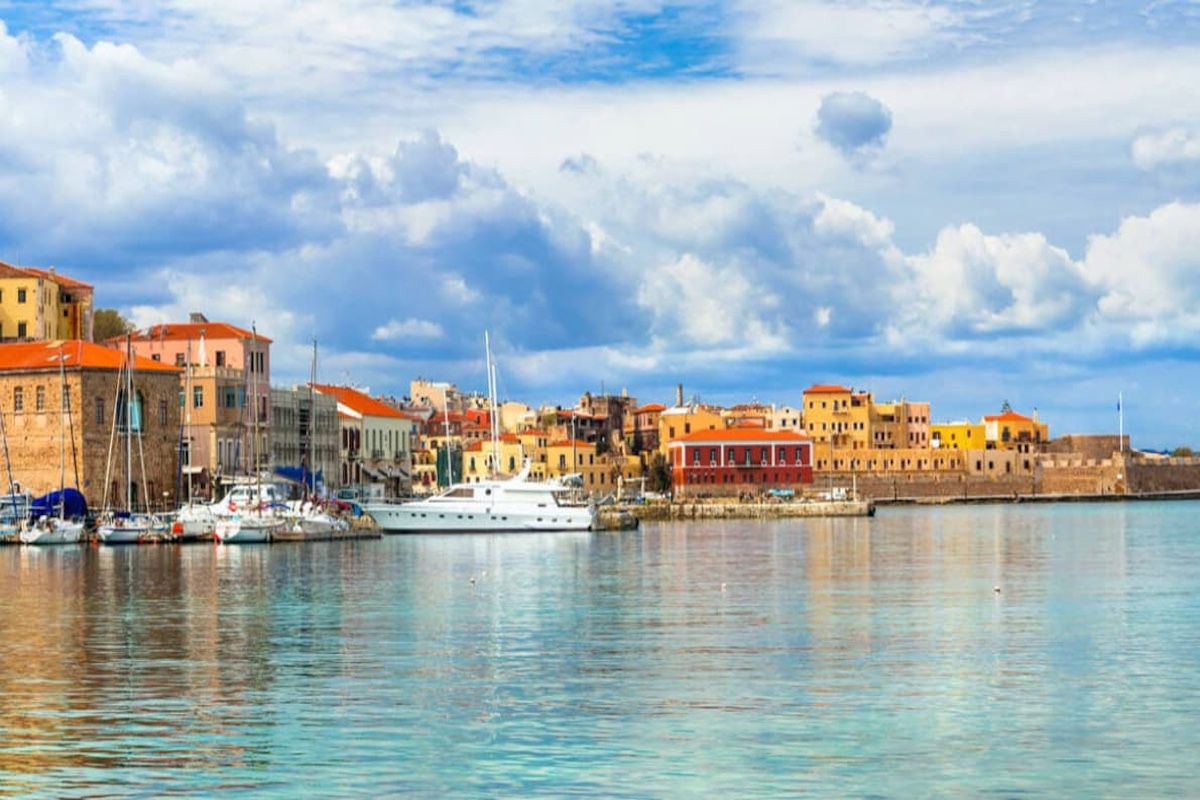Sparta - Mystras - Monemvasia. Sparta, located between the Taygetos Mountain and the Evrotas River, is known for its military strength and the historical figure of King Leonidas, who fought at Thermopylae with his 300 warriors. Mystras, just 6 km from Sparta, was established in 1249 and features Byzantine architecture influenced by Constantinople. After 1834, residents of Mystras began moving to modern Sparta. Monemvasia, a walled town in southeastern Peloponnese, dates back to the 6th century AD and is accessible only via a bridge, reflecting its name, meaning 'single entrance.' Mani - Kalamata - Messene. The Mani peninsula in southern Peloponnese is known for its rugged landscapes, remote villages, and unique architecture, including Byzantine churches and towers. The Messenia region features beautiful beaches like Voidokoilia, Foneas, and Devare, along with Taygetus, the highest mountain in the Peloponnese at 2,405 meters. Kalamata, the capital of Messenia, is located on the Messenian Gulf and is believed to be the site of ancient Pharai. It is 240 km from Athens, approximately a two-and-a-half-hour drive, and serves as a base for exploring attractions such as Pylos, Ancient Messene, and Ancient Olympia. Ioannina - Dodoni - Zagori. Explore the Northwest part of Greece with a tour that includes Ioannina, Dodoni, and Zagorochoria. Ioannina is a picturesque town by a lake featuring a vibrant old town, an ancient castle, and numerous museums. Dodoni is known for its significant archaeological site, showcasing the remnants of a historic city. Zagorochoria comprises charming mountain villages with stunning views, traditional architecture, and a rich local culture. Various services are available to tailor your journey to your preferences. Olympia. Ancient Olympia, located in the western Peloponnese, is historically significant as the birthplace of the Olympic Games, which were held every four years to honor the gods and bring together athletes from ancient Greece. The site features well-preserved structures, such as the Temple of Zeus and the Gymnasium, offering insights into ancient Greek culture. Additionally, the Temple of Epikourios Apollon, known as the second Parthenon, is situated in Bassae at 1131 meters above sea level and exemplifies the architectural prowess of the ancient Greeks, dating back to 420-400 BC. Meteora. Meteora's unique geological structures have unknown origins, with various unvalidated theories proposed. The area has been home to 24 monasteries built over six centuries, starting with hermit monks seeking isolation, with the first documented resident being Barnabas in 985 AD. The grand monastery of Magalo Meteora was founded by Athanasios from Mount Athos in 1382, leading to the construction of 23 more monasteries. By the 19th century, many had fallen into disrepair, but access improved in the 1920s with carved steps. Recently, interest in religion has risen, leading to a return of monks and nuns, making Meteora a significant destination for visitors drawn to its natural beauty and spiritual significance. Most road trips and private tours include this location. Delphi. Explore the remarkable sanctuary of Delphi with private tours organized by Luxury Cars Greece. This historical and mythical site, home to the Oracle of Delphi and the Pythia priestess, served as ancient Greece's cultural and religious center. Although abandoned in the seventh century AD, Delphi remains Greece's second most visited site, after the Acropolis. The ruins offer insights into ancient Greek life, making it a must-visit for history enthusiasts. Join our organized road trips and guided tours to discover the myths and experiences of this extraordinary location.
Thermopylae is significant in Greek history due to the Battle of Thermopylae in 480 BC during the Persian Wars. This battle featured a coalition of Greek city-states led by King Leonidas of Sparta against King Xerxes' Persian army. Despite being outnumbered, the Greek forces displayed exceptional courage and tactical skill, leveraging the narrow pass's geography. The battle symbolizes Greek resistance and heroism, and its legacy continues to inspire. Today, Thermopylae is a historical site with a monument honoring the sacrifice of its defenders. The Monastery of Hosios Loukas, located in Boeotia, Greece, is a significant example of Byzantine architecture and art dedicated to St Luke the Stiriote. It features two main churches, the Catholikon and the Church of the Theotokos, known for their well-preserved medieval frescoes. The site also includes a museum with a rich collection of religious artifacts and manuscripts, highlighting the region's cultural heritage. As a UNESCO World Heritage Site, it attracts visitors interested in Byzantine history, art, and spirituality. Thebes is an ancient city in central Greece known for its historical and mythological significance. It was a powerful city-state and a rival to Athens and Sparta, playing an essential role in ancient Greek politics and military affairs. The city is famously associated with the legend of Oedipus and the story of the Seven Against Thebes. Additionally, Thebes was a cultural hub, home to notable poets, philosophers, and artists, and had a strong military presence. Today, its archaeological remains, including the Cadmea and various temples, attract visitors interested in Greek mythology and ancient history. Chaeronea is an ancient city in central Greece, significant for the Battle of Chaeronea in 338 BC between Philip II of Macedon and an alliance of Greek city-states. Philip's victory established Macedon as the dominant power in Greece, paving the way for Alexander the Great's conquests. Chaeronea is also notable as the birthplace of historian Plutarch, whose works have greatly influenced Western literature. The city offers rich archaeological remains that provide insights into ancient lifestyles and cultures, attracting scholars and tourists today. Thessaloniki, Greece's second-largest city, was founded by King Cassander in 315 BC and named after his wife, Thessaloniki, the half-sister of Alexander the Great. It became the capital of the Roman province of Macedonia in 148 BC and was recognized as a free city in 41 BC. The city became a significant trading port along the Via Egnatia, facilitating commerce with Rome and Byzantium. Thessaloniki also emerged as an early center of Christianity in 50 A.D. when the Apostle Paul visited and established a church, later writing two letters that are now part of the Biblical canon: First and Second Thessalonians. Pella - Vergina - Veroia. Northern Greece boasts significant historical landmarks, particularly Pella, Mieza, Veroia, and Vergina. Pella, the birthplace of Alexander the Great and ancient Macedonia's capital, features its ancient city and palace complex ruins. Mieza, known for Aristotle's school, has ruins of the gymnasium where he taught. Veroia showcases a well-preserved ancient theater and the Altar of the Apostle Paul. Vergina is notable for its archaeological site, which contains the Palace and tomb of Philip II. Aigai was the original capital of Macedonia before Pella. Chalkidiki - Amphipolis. Chalkidiki is a beautiful peninsula in northern Greece known for its stunning beaches and cultural heritage. It is a popular destination for relaxation and exploration. Amphipolis, located 98 km from Thessaloniki, is historically significant and famous for the Lion of Amphipolis funerary structure from the 4th century BC. This area is connected to Alexander the Great, who prepared for his campaigns there. In 2012, archaeologists discovered a large tomb at Kasta Hill featuring a pebble mosaic that depicts figures relevant to Macedonian history, confirming its origins after Alexander died in 323 BC. Kavala, known as 'the azure city,' is a charming destination on Greece's northern Aegean coast, celebrated for its rich history, cultural heritage, and natural beauty. The town features a mix of old and new architecture, highlighted by Kavala Castle and the picturesque streets of the old town, Panagia. The seafront promenade, Paralia, is vibrant with cafes and restaurants, while the Mahalle market allows visitors to experience local culture and cuisine. Nearby, the ancient city of Philippi, a UNESCO World Heritage Site, offers insights into the region's history through its well-preserved ruins. Kavala also boasts beautiful beaches, like Ammolofoi and Batis, ideal for relaxation. The culinary scene is notable for its seafood and traditional dishes served in waterfront tavernas. Kavala presents a unique blend of historical significance, cultural vibrancy, and stunning coastal scenery. Dion is an ancient city located at the foot of Mount Olympus in Greece. It is renowned for its religious significance, dedicated to Zeus and the Muses. It was an important cultural center and hosted the Olympic Games. Today, Dion is an archaeological park with well-preserved ruins, including an ancient theatre and a museum showcasing artifacts from the region's past. Visiting Dion offers insight into its rich historical and cultural heritage. Mount Olympus is the highest mountain in Greece, located on the border of Thessaly and Macedonia. It is significant in Greek mythology as the home of the twelve Olympian gods, with Zeus as the supreme deity. The mountain is renowned for its natural beauty, diverse flora and fauna, and rugged terrain, making it a popular spot for hikers and nature lovers. It is designated as a UNESCO Biosphere Reserve due to its ecological importance and unique biodiversity, including endemic plant species and wildlife. Mount Olympus attracts travelers seeking a blend of history, nature, and adventure.
The Ionian Islands, located in the western region of Greece, are a collection of seven primary islands: Zakynthos, Ithaca, Corfu, Kefalonia, Lefkada, Paxoi, and Kythira. Known for their mild climate with warm summers and mild winters, they attract visitors year-round. The islands boast stunning mountains for outdoor activities like hiking and mountain biking alongside beautiful beaches featuring crystal-clear waters and sandy shores. Whether for relaxation or adventure, the Ionian Islands cater to various interests, making them a popular holiday destination. Crete is the largest Greek island and one of the biggest in the Mediterranean, known for its rich history, stunning landscapes, and unique charm. Key towns include Heraklion, Rethymno, and Chania. The island features impressive mountains, beautiful beaches, and archaeological sites, notably the Palace of Knossos. Visitors can enjoy traditional cuisine, various water activities like scuba diving and snorkeling, and an active nightlife. Crete offers diverse accommodations and experiences, making it a perfect Mediterranean getaway. The Dodecanese is a group of islands in the southeastern Aegean Sea known for their unique blend of Greek and Ottoman architecture, beautiful landscapes, and clear waters. With over 150 islands, visitors can engage in activities like swimming, snorkeling, and exploring ancient ruins. Luxury accommodations, including upscale resorts and villas, are available for a memorable vacation experience. Notable islands such as Rhodes, Kos, and Patmos offer gourmet dining and exclusive facilities, making the Dodecanese an excellent choice for romantic getaways and family holidays while immersing in rich Greek culture. The Cyclades Islands, located in the Aegean Sea, offer a perfect vacation destination with breathtaking landscapes and rich cultural experiences. Key islands include: - Mykonos. Known for vibrant nightlife and beach clubs. - Santorini. It is famous for romantic sunsets and white-washed buildings. - Milos. Offers diverse geological formations and stunning beaches like Sarakiniko. - Naxos. The largest island, known for its ancient history and beautiful landscapes. - Kea. A less crowded island featuring charming villages and hiking and cycling trails. The archipelago surrounds Delos, a UNESCO World Heritage site significant in Greek mythology.

